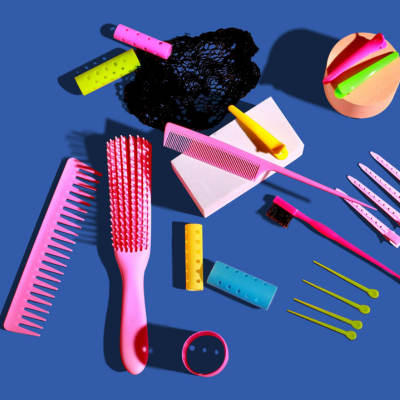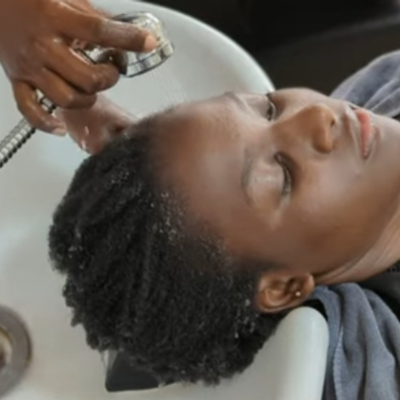- Support 24/7
- +1 (480) 468-4543
- livara@mylivara.com
14 Hair Habits You Need To Leave In 2023
How To Fix Brittle Hair That Keeps Breaking Off
December 29, 20232024: Building Better Hair Habits
January 1, 2024As we prepare to enter a new year, it’s time to bid farewell to hair habits that may have been hindering the health and vibrancy of your hair. Stick around as we uncover 14 of these bad habits and introduce you to healthier alternatives for managing your natural hair.
- Combing Dry Hair: On top of being painful, combing dry hair can lead to lots of breakage and mechanical damage like split ends.
- Prep with Leave-In Conditioner or Water-Based Moisturizer: Apply a leave-in conditioner or detangling spray like our Tsavorite Spritz Moisturizer Hair Spray to dampen and moisten the hair before combing to minimize breakage and ensure a much smoother process.
- Neglecting Moisturization: Leaving your hair without moisture for extended periods can result in problems like dryness, frizz, and generally dull-looking hair.
- Regular Moisturizing Routine: Moisturize your hair with a deep conditioner every 1-2 weeks, or regularly apply some leave-in conditioner to maintain optimal moisture balance. Thereafter, seal in the moisture using a natural oil or hair butter.
- Frequent Changes in Protective Styles Without Breaks In-Between: Constantly changing protective styles without necessary breaks in-between can lead to unnecessary stress on the hair and scalp.
- Give Your Hair a Breather: Allow your hair and scalp to breathe between protective styles with at least a week or two week break before moving n to your next hairstyle. During these breaks, opt for low-manipulation styles like natural twists or pineapple puffs.
- Skipping Deep Conditioning: Your hair becomes dull and weaker the more you neglect deep conditioning. Deep conditioners supply your hair with things that nourish it and make it softer.
- Regular Deep Conditioning: Treat your hair to deep conditioning treatments at least once every 2 weeks to restore moisture and improve your hair’s vitality.
- Making Overly Tight Hairstyles: You want every single hair to look sleek and in place, but at what cost? Holding your hair too tightly in styles like sleek ponytails or buns can cause stress on the scalp and hair follicles, leading to breakage and even hair loss along the edges.
- Opt for Looser Styles: When styling your hair, do so gently, avoiding excessive tension, especially around the edges. If you feel like the way your stylist has styled you’ve hair feels too tight, don’t sit quiet and let them go on, ask them to loosen it or do so yourself.
- Improperly Removing Protective Styles: Rushing the protective style removal process can result in unnecessary breakage. Many people loose more than what is normal after taking out protective styles like braids and locs.
- Gentle Removal: Take your time when removing protective styles; prep by spraying some water and applying conditioner to ease unraveling and detangling. Learn the best way to prevent breakage when taking down your protective style here.
- Letting Stylists Do Anything To Your Hair: Allowing stylists to use products that are unsuitable for your hair type or techniques like braiding too tightly will do you more harm than good.
- Communication is Key: Don’t sit back and be quiet when you’re uncomfortable with what they’re doing to your hair. Clearly communicate your hair preferences and sensitivities to your stylist. Speak up when they’re using too much heat, applying conditioner incorrectly, or generally using products that you know don’t work well with your hair.
- Excessive Heat Styling: While the added length and seemingly easier-to-manage texture may be nice every time you blow dry, curl, or straighten your hair, it’s not good in the long run. Regular use of heat styling tools dries out the hair, making it weaker and more prone to damage.
- Limit Heat Usage: Limit heat styling to as few times as possible and opt for heat-free styling alternatives like simple braids or Bantu knots to lengthen hair and define curls. When you do choose to heat style, use heat protectants and lower temperature settings.
- Avoiding Regular Trims: Putting off trims, even with visible split ends, due to fear of losing length will only make the damage travel further up your hair shaft, damaging your hair.
- Trim When You Notice Split Ends: Schedule regular trims to remove split ends and promote healthy hair growth. Having healthy hair is more important than long, damaged strands.
- Not Cleaning Your Hair Tools: Infrequently cleaning your combs and brushes can lead to the accumulation of dirt, oils, and bacteria. Going on to use dirty hair tools can further result in scalp infections.
- Regular Cleaning Routine: Clean your combs and brushes at least once a week to maintain a healthy scalp and prevent the transfer of debris onto your clean hair. Learn the best way to clean them here.
- Going Months Without Washing: Many of us are guilty of this, especially when we have in protective styles like braids. Taking such prolonged periods without washing can lead to excessive scalp and product buildup, and an environment that does not encourage healthy hair growth.
- Regular Washing Schedule: Establish a consistent washing routine suitable for your hair type to maintain a clean and healthy scalp. For afro or kinky hair types, we recommend washing your hair at least once every 2-3 weeks, depending on your individual hair needs. You may need to wash your hair more regularly if you gym a lot or use hair products like gel for styling.
- Drying Hair with Regular Towels: The towels we use for drying our bodies aren’t the best fit for drying the hair because of their texture. Regular towels have rough fabrics that tug on the hair, potentially breaking it.
- Use a Microfiber Towel: Invest in a microfiber towel or use an old t-shirt to gently absorb excess water from your hair without causing damage.
- Overusing Hair Dyes and Color-Altering Treatments: Subjecting your hair to frequent color treatments without proper care can result in dryness, breakage, and a general loss of vibrancy.
- Prioritize Hair Health: Space out color treatments and invest in color-safe, hydrating products like our natural Livara hair products to maintain the integrity of your hair while it’s color treated.
- Excessively Touching and Pulling at Hair Strands: While it may be an unconscious habit to reach out for your hair, twirl it around your fingers or just pull at it, this can lead to breakage and damage.
- Mindful Handling: Be conscious of your hands and avoid excessive touching or pulling. Hold your hair in protective styles like cornrows or braids to minimize the urge to touch your hair constantly.
2024 healthy hair. Transform your hair in 2024 by leaving these damaging habits behind and embracing healthier alternatives. Here’s to a year of healthy, vibrant hair!



